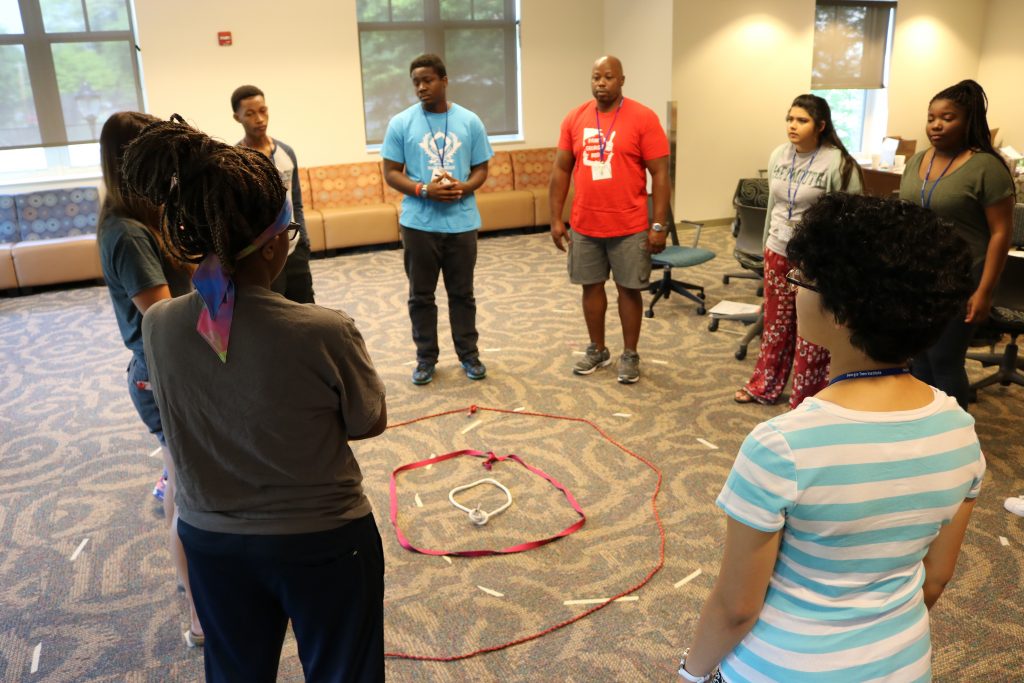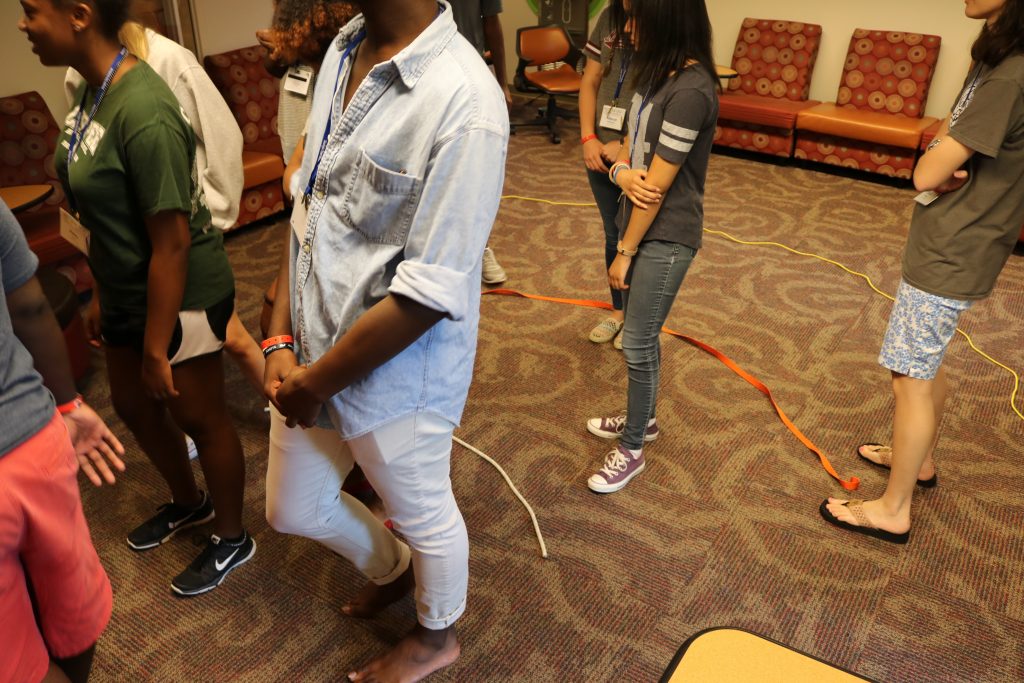Risk Zones
Groups that could benefit from bonding and getting to know one another on a deeper level can sometimes use a team building activity that encourages participants to open up a little and identify with one another. The goal of Risk Zones is to understand risk and comfort zones, and therefore increase trust within a group. It can also be important for group leaders to get to know how individuals feel about various tasks in order to support their growth.
 Time Needed: 20 minutes
Time Needed: 20 minutes
Group Size: At least 5 people
Materials: Three ropes to make a small inner circle, medium middle circle and large outer circle. (All participants should be able to stand inside the area of the three circles.)
Note: If you have a large group and small ropes, you can also create half-circles out of the ropes to give your participants more space to move around.
Directions: Have all participants stand outside of the largest circle. Explain that you will pose a series of questions and that after each, they should move in order to answer that question. It is important that they answer individually and honestly, not based on what others are doing.
The smallest inner circle represents that you are “extremely comfortable” with something. Extremely comfortable means that it’s super easy and doesn’t make the person stressed. The medium middle circle represents that they are “moderately comfortable” with something. Moderately comfortable means that it doesn’t make them super stressed, but they’re not 100% comfortable with it. The largest outer circle represents that the person is “not comfortable” with something. If they move to outside of the largest outer circle, they are “extremely uncomfortable” with something. Extremely uncomfortable means that it makes them feel very stressed and uneasy. Participants should move to whichever part of the circle they believe most describes their level of comfort with the questions as you read them aloud.
Note: For some groups, it may be helpful to label the parts of the circle with the various comfort levels, or just remind them as questions are being read.
Before beginning this activity, it is important to remind participants to be respectful of how others answer. There is no wrong answer for each question. After everyone has moved to answer a question, quietly take a look around to see where others are standing.

Sample questions:
- How comfortable are you with spiders?
- How comfortable are you introducing yourself to someone you don’t know?
- How comfortable are you speaking in front of a group of people?
- How comfortable are you dancing on stage?
- How comfortable are you asking questions when you don’t understand something?
- How comfortable are you talking about yourself?
- How comfortable are you talking to others in your community about issues that are important to you?
- How comfortable are you working with people who are different from you?
- How comfortable are you being yourself?
Thank everyone for participating and have them move back to the outside of the largest circle to debrief the activity.
Debrief Questions:
- What was it like to answer these questions?
- What stood out to you during the activity?
- What role does respect play in this activity?
- What did you learn about our group as a whole?
- How does what you learned impact you moving forward?
